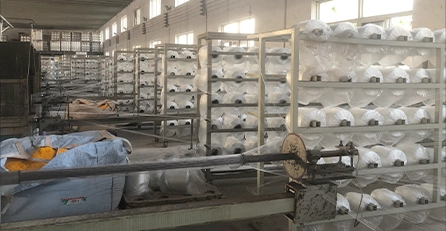Understanding HVAC Vacuum Hoses for Efficient System Maintenance and Repair
Understanding HVAC Vacuum Hoses Essential Tools for Proper System Maintenance
Heating, Ventilation, and Air Conditioning (HVAC) systems are critical for maintaining comfortable indoor environments. However, like any complex machinery, they require regular maintenance to ensure optimal performance and efficiency. One of the key components in this maintenance process is the vacuum hose. Understanding HVAC vacuum hoses, their purpose, and their proper use is essential for both professionals and DIY enthusiasts.
What are HVAC Vacuum Hoses?
HVAC vacuum hoses are specialized tubes designed to create a vacuum in HVAC systems. They are primarily used in the evacuation of refrigerants during the installation, repair, or servicing of air conditioning and refrigeration systems. These hoses are typically made of durable materials that can withstand the pressure and chemicals associated with HVAC systems. It is important to choose high-quality vacuum hoses to prevent leaks, which can compromise the effectiveness of the HVAC system.
The Importance of Using Vacuum Hoses
Creating a vacuum in an HVAC system is crucial for several reasons
1. Removing Moisture One of the main purposes of evacuating a system is to remove any moisture that may have accumulated. Moisture can cause corrosion, ice formation, and overall inefficiency in HVAC systems.
2. Eliminating Air and Contaminants Air and other contaminants can lead to system blockages, reduced efficiency, and even complete failure. Using vacuum hoses allows technicians to remove unwanted air, ensuring that the refrigerant operates smoothly.
3. Enhancing Efficiency By properly evacuating the system, you enhance the overall efficiency of the HVAC unit. A clean system runs more efficiently, saving energy and prolonging the life of the unit.
4. Ensuring Proper Charge A system that is not properly evacuated will not hold the correct amount of refrigerant, leading to performance issues. Using vacuum hoses ensures that the system is primed for optimal operation.
hvac vacuum hoses

How to Use HVAC Vacuum Hoses
Using vacuum hoses requires adherence to specific procedures to ensure safety and effectiveness
1. Preparation Before beginning, gather all necessary tools, including a vacuum pump, manifold gauge set, and, of course, your vacuum hoses. Check the hoses for any cracks or wear to avoid leaks.
2. Connecting the Hoses Connect the vacuum hose to the suction side of the manifold gauge set, and the other end should connect to the vacuum pump. Ensure that all connections are tight to prevent any leaks.
3. Evacuation Process Start the vacuum pump and allow it to run for at least 15-30 minutes or longer, depending on the system size. Monitor the gauge to ensure that the vacuum is being maintained and that there are no leaks.
4. Final Checks Once the evacuation process is complete, turn off the vacuum pump and close the manifold valves. It’s essential to observe the gauge for any rise in pressure, indicating a leak.
5. Disconnecting Carefully disconnect the hoses, following the inverse of how they were connected. Ensure that you cap any open ports to prevent contamination.
Conclusion
Understanding HVAC vacuum hoses and their role in maintaining HVAC systems is vital for anyone involved in the field, be it a professional technician or a homeowner taking on DIY maintenance. Proper use of these hoses not only enhances system efficiency but also prolongs the lifespan of the HVAC equipment. With the right tools and knowledge, anyone can manage their HVAC systems effectively, ensuring a comfortable and efficient living environment.
-
Top Quality Oxy Acetylene Hoses for Sale Fit for Welding DemandsNewsJul.28,2025
-
The Future of Pneumatic Air Tubes in IndustryNewsJul.28,2025
-
Superior and Reliable LPG Hose Pipe Solutions for Every NeedNewsJul.28,2025
-
Exceptionally Durable and Versatile Premium Braided PVC TubingNewsJul.28,2025
-
Best Adapters for Connecting Garden Hose to PVC Pipe ConnectionsNewsJul.28,2025
-
The Essential Role of LPG Hoses in Safe and Efficient Gas DistributionNewsJul.16,2025














